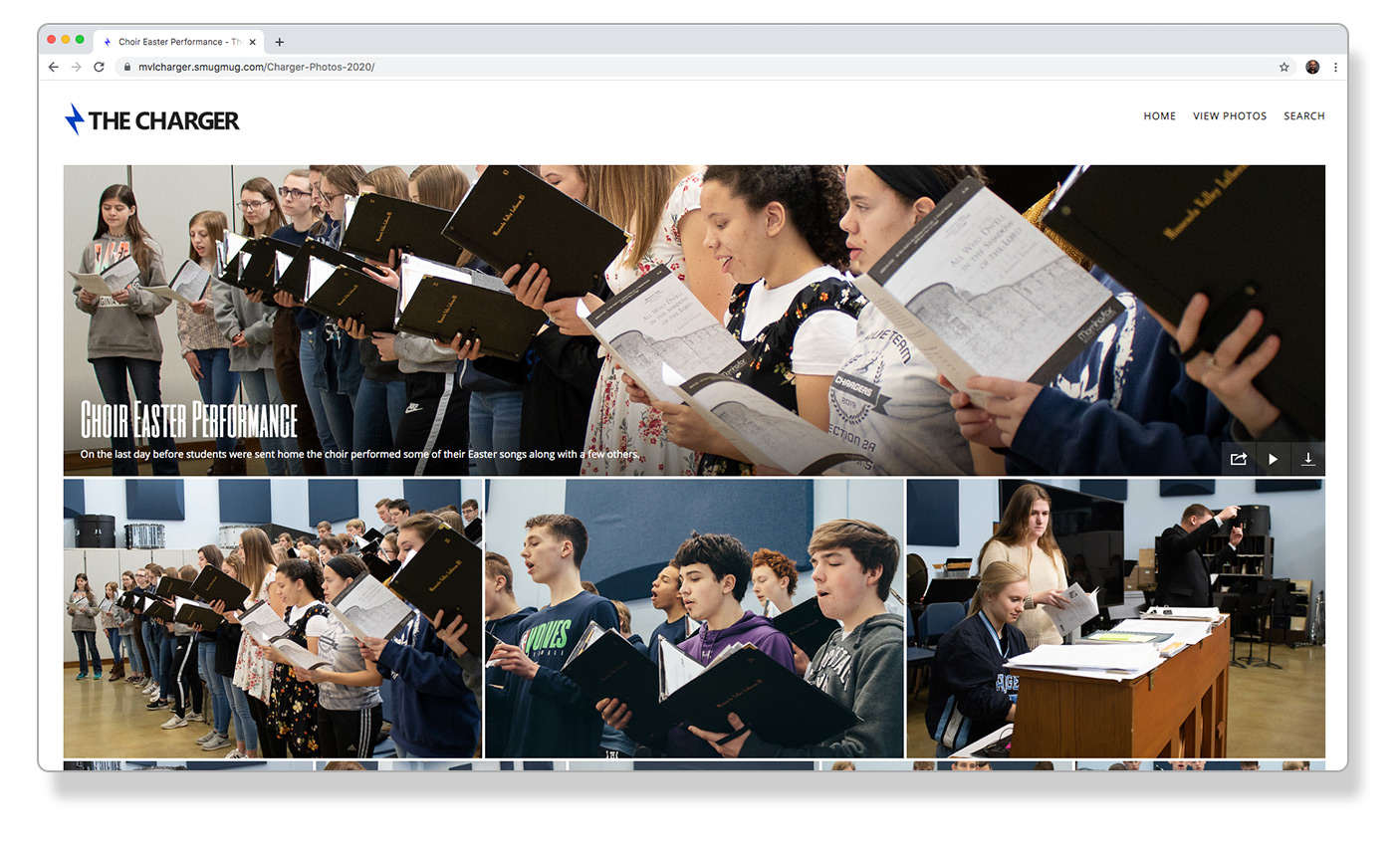- Home
- Arts
- _Art Club
- _Band
- _Choir
- _Chargaliers
- _Drama
- Sports
- _Golf
- _Softball
- _Baseball
- _Track
- _Girls Basketball
- _Boys Basketball
- _Trap Shooting
- _Tennis
- _Hockey
- _Cross Country
- _Girls Soccer
- _Boys soccer
- _Football
- _Volleyball
- Academic Teams
- _Knowledge Bowl
- _Math Team
- Clubs & Orgs
- _Stu Co
- _Speech
- _NHS
- _Dance
- Videos
- Podcasts
- Photos
Lullay My Liking video
Unknown
12/24/2015 07:00:00 AM
"Lullay My Liking" is a Middle English poem or carol from the 15th Century. It is set in the Nativity and suggests a lullaby sung by Mary to the infant Jesus. The term "lullay" is said to originate from the syllables "lu" and "la," as they were sounds used by mothers to calm their children. The Oxford English Dictionary tells us that it is a nonsense word with a soothing sound, making it ideal for a child's lullaby. The author of the poem is unknown.
Lullay my liking, my dear son my sweeting;
Lullay my dear heart, me own dear darling.
I saw a fair maiden sytten and sing.
She lulléd a little child, a sweete lording.
Lullay my liking, my dear son my sweeting;
Lullay my dear heart, me own dear darling.
That eternal Lord is He that made allé thing.
Of allé lordés He is Lord, of allé kingés is King.
Lullay my liking, my dear son my sweeting;
Lullay my dear heart, me own dear darling.
There was mickle melody at that childés birth.
Although they were in heaven's bliss they madé mickle mirth.
Angels bright they sang that and saiden to that child:
"Blessed be Thou and, so be she that is both meek and mild."
Lullay my liking, my dear son my sweeting;
Lullay my dear heart, me own dear darling.
Pray we now to that child as did his mother dear;
God grant them all his blessing, that now maken cheer.
Lullay my liking, my dear son my sweeting;
Lullay my dear heart, me own dear darling.
Symbolism in the artwork:
Mary and her infant son, Jesus occupy the center of the composition. Like the lyrics of the song, the image suggests a peaceful moment between the two. Surrounding imagery however hints at events outside the nativity. A scroll symbolizes the prophecies that Jesus' birth fulfilled. Grapes and wheat stand for the Lord's Supper, instituted by Jesus Maunday Thursday (Matthew 26). They also recall times Jesus referred to himself as "the vine" (John 15) and "the bread of life" (John 6:35). A palm branch, crown of thorns, hammer and nails all point to Jesus' suffering and death. The peacock and butterfly have traditionally been understood by Christians as symbols of the resurrection. All together, the sweet image of Mary and Jesus is set in a framework that emphasizes the broader significance of Christmas. This image also reacts to Mary's contemplations (Luke 2:19). For a time it was a simple mother and child, but the images in this artwork, like the harmonies in this song, combine sweetness and foreboding.
The incarnation of the almighty God as a human in very humble circumstances is a surprise in history. At the same time it was expected from the beginning. The effects of Christmas and Easter have changed this world and they open the door to the next. These were the most important events in history, yet they still evade logic and require simple faith.
Artwork by Jason Jaspersen. jjjaspersen.com
Performed by the Minnesota Valley Lutheran High School Chargaliers choir 12/22/15 under the direction of Jon Hermanson. Soloists: Samuel Weichman, Johanna Kettner.
Popular Posts
How to Care for Your Pet Phoenix
11/30/2020 11:09:00 AM

Spring Drama 2K18
5/11/2018 08:10:00 AM
Anne of Green Gables Trailer
5/05/2017 08:52:00 AM
Most Recent Video
Created By SoraTemplates | Distributed By Blogger Themes

